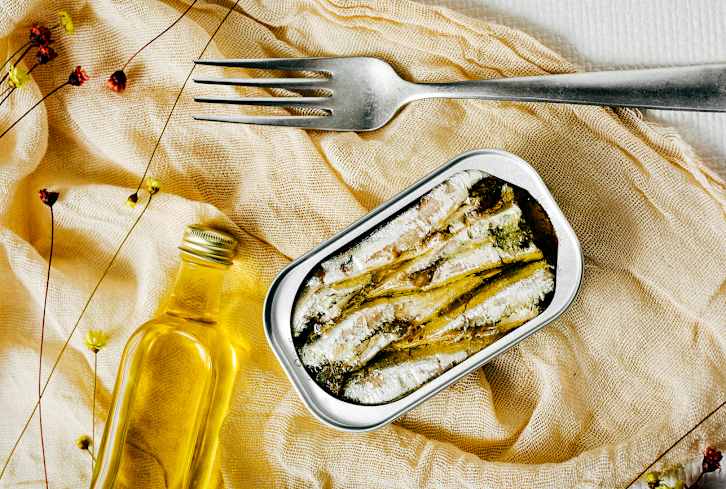Advertisement
Have You Heard Of Reverse Fasting? It's Better For Your Blood Sugar Than Skipping Breakfast

As an integrative medicine doctor, I've researched a lot of different wellness trends, nutrition plans, and complementary and alternative therapies. And lately, there's one that's been front of mind. I want to introduce you to a diet that is made for super-busy people who still want to stay in shape and maintain a healthy weight, prevent disease, and have optimal energy all day long. It's called the sun cycle diet.
The sun cycle diet comprises a few simple steps, including getting direct sunlight on your skin every morning (whether from sun or sunlamp) and reverse fasting, which is a type of intermittent fasting in which you skip dinner instead of breakfast.
What is reverse fasting?
Reverse fasting is a little bit different from the traditional type of intermittent fasting because instead of eating dinner around 8 p.m. and skipping breakfast, you start your fast earlier in the day (preferably around 5 or 6 p.m.) and then fast for 12 to 15 hours. It's a subtype referred to in the scientific literature as early time-restricted eating or just time-restricted feeding. Researchers have found this type of fasting to be superior to just fasting anytime. For example, the results from a study on breast cancer survivors showed that starting your fast early in the evening (before 8 p.m.) was better than after 8 p.m. In that study, researchers asked breast cancer survivors to do a 13-hour fast and found that with just 13 hours between the last meal of the day and breakfast, people started losing weight and having a 36 percent reduction in breast cancer1 recurrence as opposed to people who were eating freely. And when you think about it, this diet is as simple as it gets. You just eat dinner at 6 p.m. and then eat breakfast at 7 a.m. There are no food group restrictions or calorie counting. In another study on reverse fasting, researchers found that if you eat dinner just 90 minutes early—and push your breakfast 90 minutes later than usual—your body will respond by burning more fat, even when you're eating the same number of calories.
The power or the circadian rhythm.
The concept of reverse fasting is really about using the power of the sun and your circadian rhythm to inform your eating and sleep-wake schedule. Many people have heard about circadian rhythms, but did you know that we have a circadian clock in each one of our cells? It's true. All of our cells and organs have clocks that determine when our genes should be turned on and turned off. It makes sense that you can’t do all actions in the body at once. So when the sun goes down, usually the actions of digestion are turned off and the actions of repair and restoration are turned on. If you eat late at night, you may get slower digestion, inappropriate acid production, and more insulin resistance. This leads to fat gain, G.I. symptoms, and even diabetes. But, In the morning, shortly after sunrise, the digestive genes are more active again, which is why eating breakfast and not dinner is a great option for those looking to promote optimal health.
How to start reverse fasting today.
If you're intrigued by the concept of reverse fasting and living in harmony with your circadian rhythms, here's how to get started: Plan to do a reverse fast daily (meaning you leave 12 to 13 hours between your early dinner and breakfast. Then, two days a week, extend your fast by a few more hours, leaving 16 hours between your early dinner and breakfast the next day.
That means that five days a week you are doing a 12- to 13-hour fast—drinking only water or calorie-less liquids—and then two days a week, you are fasting for 15 or 16 hours. Remember to consume only water or low-calorie liquids up to 20 calories while fasting, and when you break your fast, eat a low-sugar meal and avoid processed foods.
Timing your meals with your sleep-wake cycle and the sun.
The next part of this intermittent fasting/sun cycle plan is to get your sleep schedule in harmony with your eating schedule. This means your bedtime is between 9 p.m. and 11 p.m. every night and your waking time is between 5:30 a.m. and 8 a.m. every morning. But what if you are a self-proclaimed night owl? Although it seems like there are people who are night owls and people who are early morning people—the truth is that most people have very similar circadian rhythms! Keeping your sleep schedule as close to this schedule as possible will help you have good sleep hygiene, and your body will thank you.
The next part of the sun cycle diet is to wake up every morning and get two to five minutes of sunlight. Ideally, you would walk outside barefoot and spend a few minutes basking in the sun taking slow deep breaths and setting your intentions for the day. Or maybe you just walk your dog or walk the last two to five minutes to work in the sunlight, or spend a few extra seconds in the sun in the parking lot when you get out of the car. Getting that morning sun before 10 a.m. into your eyes sends signals to your suprachiasmatic nucleus in the hypothalamus and resets your brain. And the benefits of this extend beyond sleep to better hormone regulation.
The seemingly simple concept of living in harmony with your circadian rhythm is free and, in my opinion, should be recommended by all physicians as easy ways to improve inflammation, digestion, hormones, and disease.

Dr. Amy Shah is a double board certified MD with training from Cornell, Columbia and Harvard Universities. She was named one of mindbodygreen's Top 100 Women In Wellness to Watch in 2015 and has been a guest on many national and local media shows. She helps busy people transform their health by reducing inflammation and eating more plants, utalizing the power of the microbiome to help digestion, natural hormone balance and food sensitivities. She is an expert on intermittent fasting for women and has a 2 week guided group program.
More from the author:
Functional Nutrition Training
Check out Functional Nutrition Coaching
A cutting-edge nutrition deep dive taught by 20+ top health & wellness experts
Learn moreMore from the author:
Functional Nutrition Training
Check out Functional Nutrition Coaching
A cutting-edge nutrition deep dive taught by 20+ top health & wellness experts
Learn more
Dr. Amy Shah is a double board certified MD with training from Cornell, Columbia and Harvard Universities. She was named one of mindbodygreen's Top 100 Women In Wellness to Watch in 2015 and has been a guest on many national and local media shows. She helps busy people transform their health by reducing inflammation and eating more plants, utalizing the power of the microbiome to help digestion, natural hormone balance and food sensitivities. She is an expert on intermittent fasting for women and has a 2 week guided group program.


















